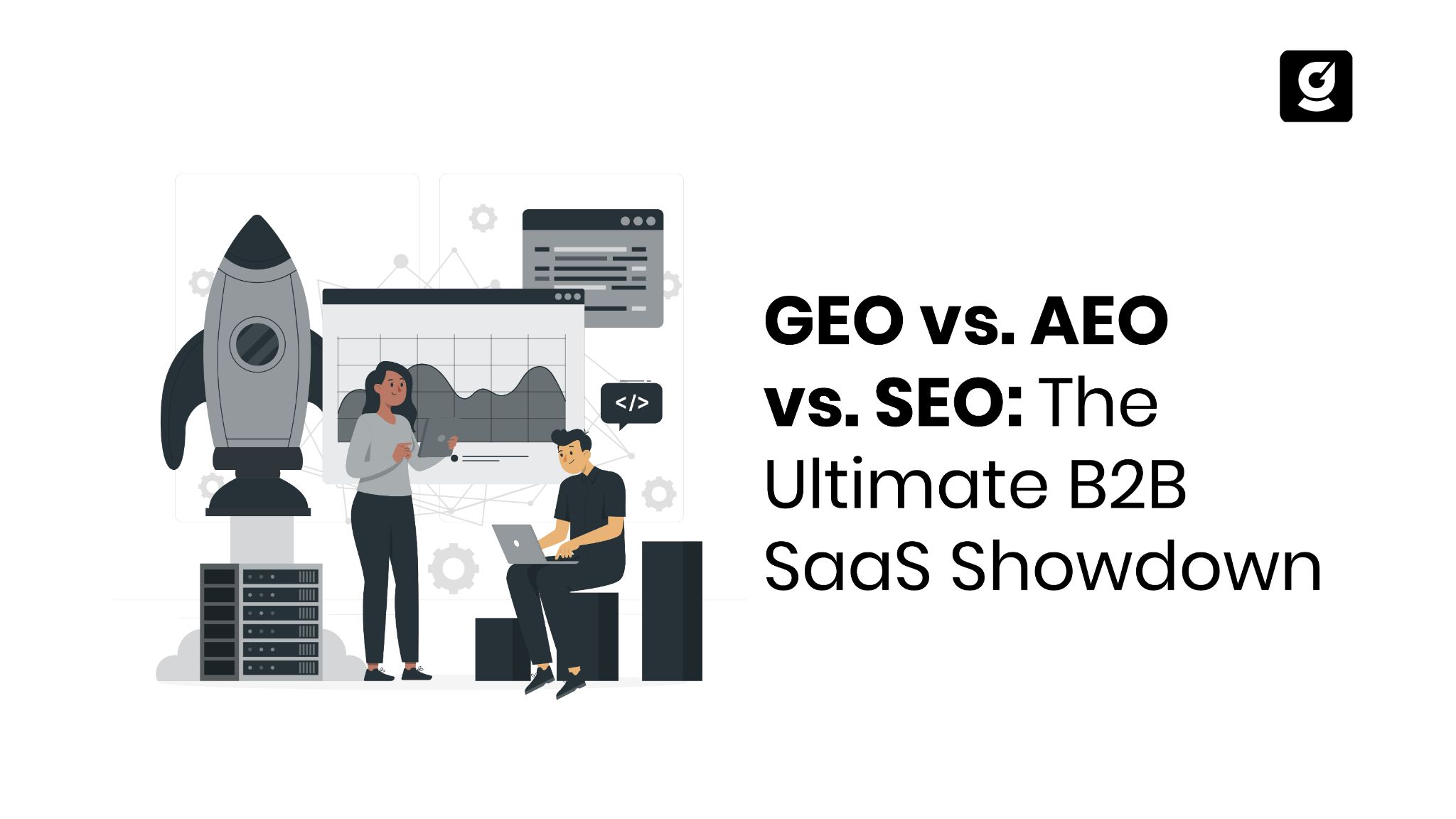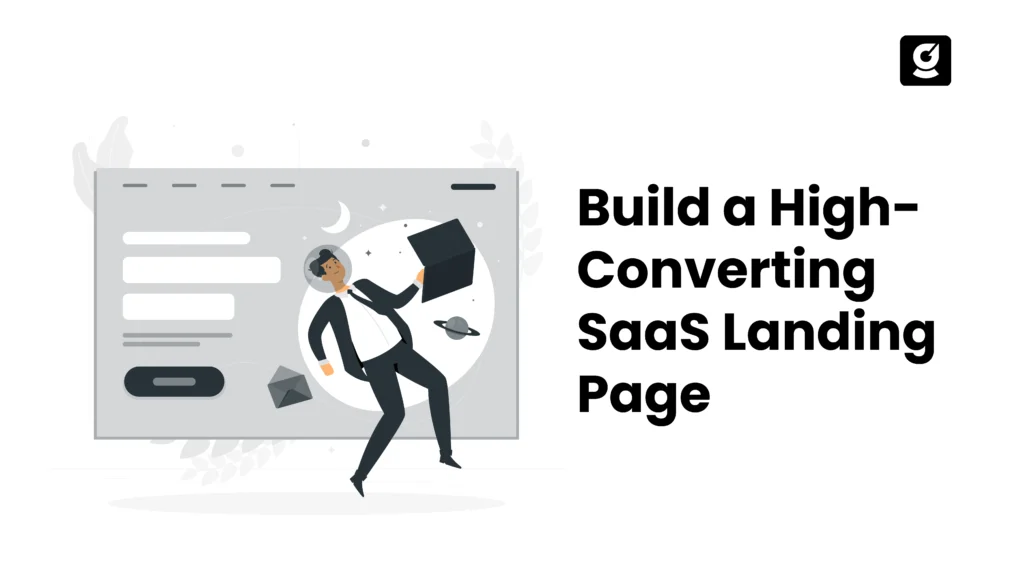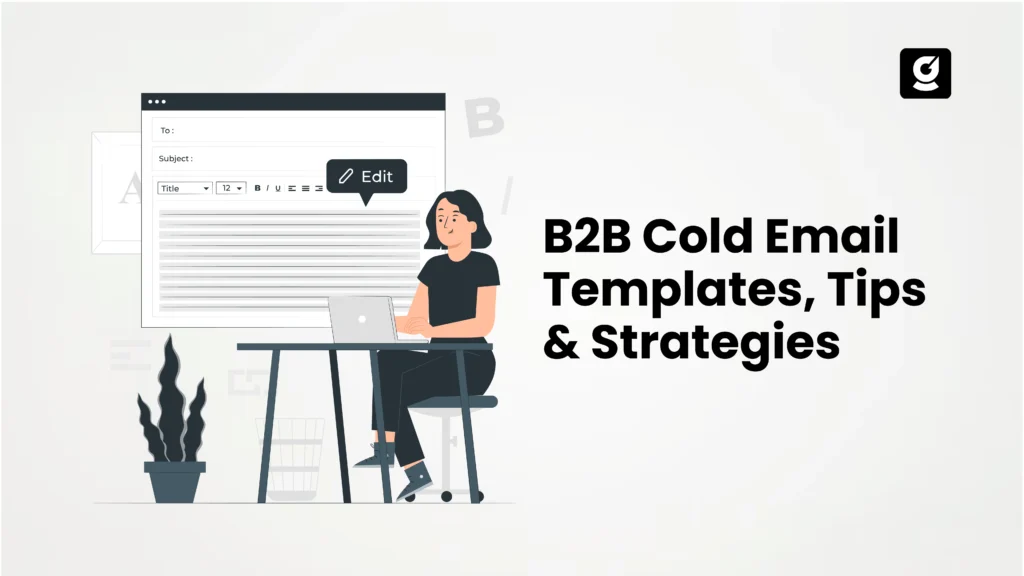What do you think will happen if 68% of your B2B buyers indicate that they begin their research with broad, unbranded searches, and 75% of them never scroll past the first page? Unless you present yourself with the right combination of relevance, authority, and structure, you are as good as invisible.
So the real question is: why is your content not converting? B2B SaaS teams are no longer asking how to rank. They are struggling to be found by the right buyers and turn that visibility into qualified demos and conversions.
The problem? Just depending on outdated SEO will no longer be sufficient. Search engines are improving, and buyers are getting more knowledgeable. If your content doesn’t answer intent, reflect entity understanding, or match local relevance, it’s missing key signals that Google and your buyers now expect.
Moreover, Google’s algorithms now reward entity understanding (AEO), location-based search signals (GEO), and structured content more than keyword stuffing. That’s where understanding the real differences between GEO vs. AEO vs. SEO becomes critical.
If you are seeing more traffic but fewer demos, or flat traffic despite good content, then you are the ones we are looking to help. This blog will explain why exactly it is happening and what you can do about it. So, let’s get started!
The Real Problem With SEO-Only Approach and Why It’s Costing You
- The Pain Point:
Your B2B SaaS team invests heavily in content and SEO, but unfortunately, sees minimal ROI. You work hard to rank for keywords, but fail to capture the actual decision-makers.
- Why Do You Struggle?
Because today’s search isn’t just about keywords, as nobody is concerned about it anymore. Modern-day searches are more about context, intent, entities, and location-focused. If your SEO doesn’t signal who you are, what you solve, and where you serve, you will be sitting somewhere alone while your competitors with smarter, richer search strategies take away your customers.
The Hidden Costs of Ignoring AEO and GEO
- Wasted Content Budget: Teams pump out blog posts that never convert.
- Long Sales Cycles: Low-quality leads create friction in your funnel.
- Missed Local Opportunities: GEO targeting could drive enterprise accounts nearby, but you’re invisible to them.
- Reduced SERP Visibility: Without structured data or entity optimization (AEO), you miss prime placement in knowledge panels or voice search.
B2B Reality Check: As per a Gartner report, around 83% of the buyer’s journey happens before talking to a salesperson. This simply means if your search presence doesn’t solve intent and cater to SEO, AEO, and GEO, then you are not even in the competitive race.
Understanding the Three-Headed Beast: GEO vs. AEO vs. SEO
SEO (Search Engine Optimization)
SEO, or Search Engine Optimization, is a practice aimed at improving your website and its content so that it ranks higher on internet search engines, particularly Google. Optimization processes include content enhancement, keyword targeting, on-page element optimization, and backlink acquisition.
How it works:
Google uses complex algorithms to crawl, index, and rank websites based on several factors. Some of them include:
- Keyword Research: Knowing what your potential customers want to know.
- Technical SEO: Fixing issues with the site speed, mobile-friendliness, and structured data.
- On-Page SEO: Working on title tags, meta descriptions, and keyword placement.
- Backlinks: Getting links from trustworthy websites can help your domain authority rise.
- Content Strategy: Publishing useful, SEO-optimized content, landing pages, and guides.
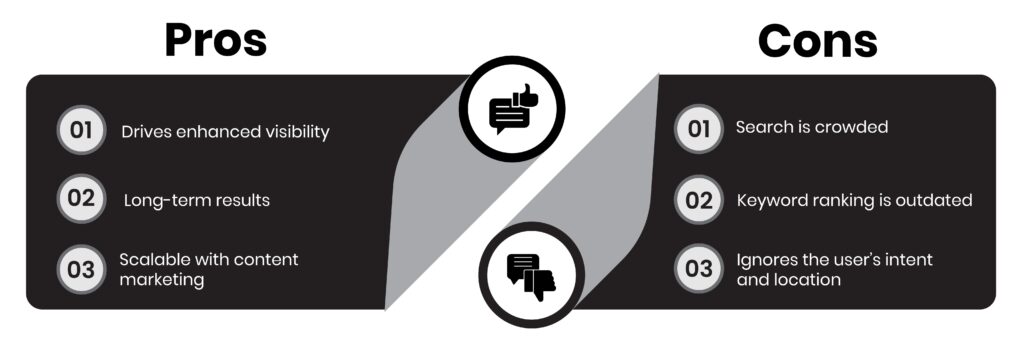
Why SEO Matters for B2B SaaS:
- Helps capture top-of-the-funnel traffic.
- Creates long-term brand visibility and credibility.
- Reduces dependence on paid ads over time.
- Enables inbound demand generation for high-intent queries (e.g., “best CRM for SaaS startups,” “top project management tools for remote teams”)
GEO (Generative Engine Optimization)
GEO or generative engine optimization is the practice of making your content easy to feature in answers generated by AI tools, such as Google’s Search Generative Experience (SGE), ChatGPT, Bing Copilot, and others.
These tools don’t just show links, but they create answers summarizing information from multiple websites. If your content is GEO-optimized, then you might get included and credited in these AI-generated responses. Remember when everyone was chasing Google snippets? Now it’s all about the AI overview.
How it works:
- Get to know how AI tools work: Figure out their methods to collect and produce content.
- Make helpful content: Produce clear, accurate, and well-organized content that addresses common questions in your niche.
- Structure your format: Break down content into subheadings, bullet points, and summaries, which AI tends to prefer.
- Mention Reliable Sources: Add stats, research, and expert quotes with proper references.
- Optimize for Questions: Frame your content around user questions and problems that AI tools are likely to be asked.
Get Linked and Mentioned: Backlinks, mentions, shares, and a strong domain authority help AI trust your content more.
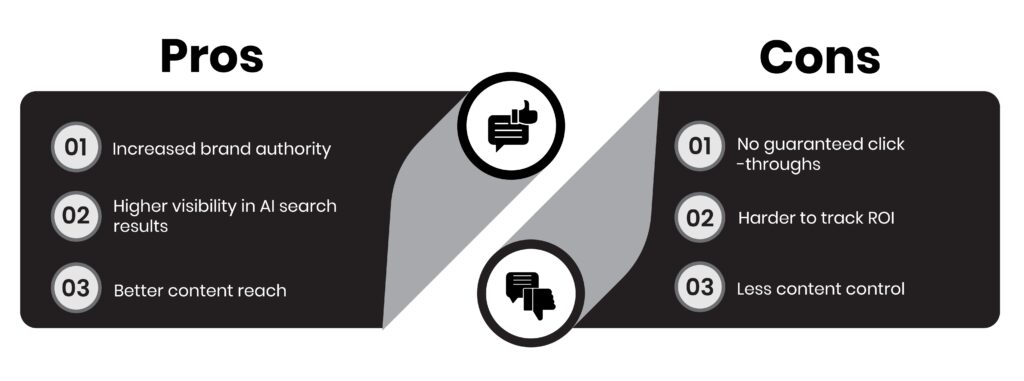
Why GEO Matters for B2B SaaS:
- Being featured in AI overviews builds trust early in the customer journey.
- Content that answers specific SaaS questions (pricing, integrations, comparisons, ROI) is more likely to be surfaced by generative engines.
- Buyers and decision-makers rely on AI tools like ChatGPT to research solutions, compare vendors, and make decisions. Your GEO-optimized content can save them a lot of time and effort.
AEO (Answer Engine Optimization)
With AEO, brands can optimize their content and digital presence for answer engines, and not just search engines. It makes sure that your content is easily understood by AI-driven platforms, like Google’s featured snippets, Siri, Alexa, and Google Assistant.
Whether someone asks, “What’s the best CRM for startups?” or “How does payroll compliance work in Canada?” AEO ensures your answer is the first thing that the engine shows.
How it works:
- Add Schema Markup: Implement schema constructs like FAQ, HowTo, review, etc. to help search engines understand and display your content efficiently.
- Voice Search Optimization: Writing in a simple, conversational tone that exactly matches the way people talk when they ask questions to a voice assistant.
- Structure for Snippets: Format the answers in lists, tables, or short paragraphs to appear in the top answer box of Google.
- Focus on Direct Answers: Prepare the content based on the exact questions of the users and provide short and clear answers.
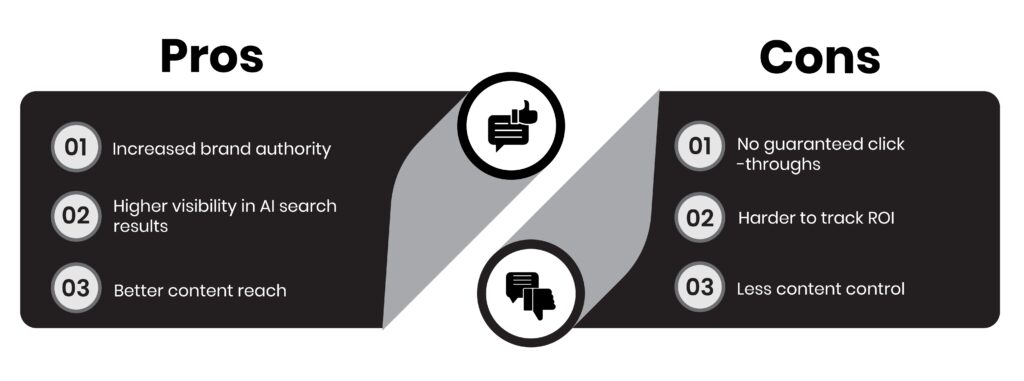
Why AEO Matters for B2B SaaS:
- B2B buyers are now increasingly searching in natural language (e.g., “Which SaaS platforms are best for remote workforce compliance?”)
- Voice and AI-generated answers are overtaking the traditional blue links.
- AEO builds authority, increases SERP visibility, and enables your brand to appear above #1 in the snippets.
Quick Comparative Summary: GEO vs. AEO vs. SEO
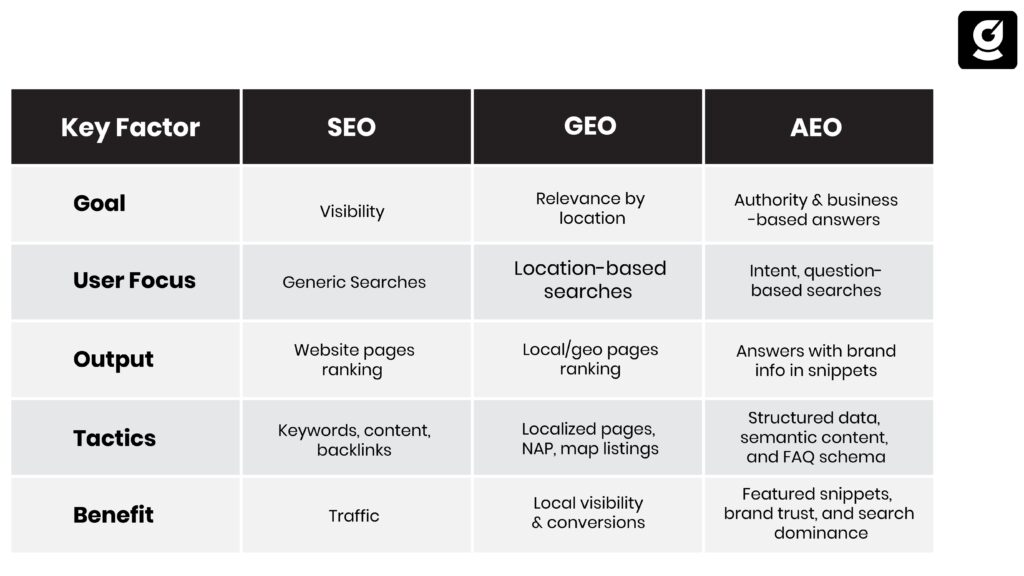
But Our SaaS Is Global—Why Should We Care About GEO?
The Myth: B2B SaaS brands often assume that GEO optimization only applies to retail or service-based businesses.
The Truth: Even globally distributed SaaS platforms benefit from GEO when:
- Sales teams are region-specific.
- Buyers in different regions search differently.
- Local compliance, integrations, or use cases matter.
- Local awards, case studies, and customer proof can increase trust.
Pro Tip: GEO doesn’t just mean adding city names to content, but it means understanding regional buying behavior and aligning the content and metadata accordingly.
Is Your Search Strategy Missing the GEO, AEO, SEO Advantage?
Here are some expert tips on how you can use all three together for your B2B SaaS business:
- Build Entity-First Content Clusters:
Don’t just write for keywords. Structure content around entities, your brand, product category, problems solved, use cases, and verticals. Use tools like Google’s NLP API to check how Google understands your content.
- Localize Conversion Paths:
Create localized landing pages not just with keywords, but with region-specific CTAs, testimonials, and value propositions.
- Use Schema Markup Strategically:
Implement structured data to power AEO. This helps trigger knowledge panel results, Google snippets, and increases customer trust.
- Optimize for Voice & Featured Snippets:
Voice queries often power high-intent B2B questions. Write content that answers directly and clearly. Use subheadings like questions, and provide concise answers under them.
- Monitor Search Intent, Not Just Rankings:
Use tools like Semrush or Surfer SEO to analyze SERP intent for the target audience. Is the query informational, transactional, or navigational? Align the content accordingly.
What Does a Winning B2B SaaS Strategy Look Like in 2025?
Let’s come directly to the point. You don’t have to choose GEO, SEO, or AEO, but have to choose all three for your B2B SaaS strategy. Make such a plan that integrates all three tailored as per the ICP, buying stages, and user search patterns.
Here’s a quick framework:
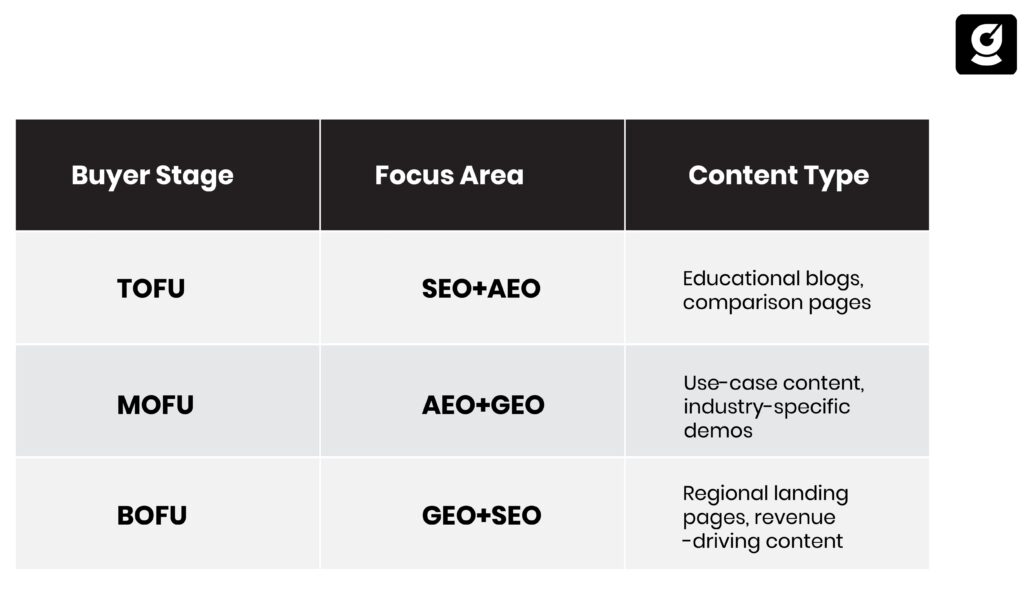
This kind of approach ensures relevance, authority, and visibility, all of which are necessary for the business pipeline growth.
AEO vs. GEO vs. SEO: growth.cx Knows What Really Scales in B2B SaaS
Choosing between AEO, GEO, and SEO isn’t about picking one over the other, but it’s about knowing how to use each to serve your buyers at the right moment. It’s no longer enough to just show up in the search. You need to show up as the most credible, relevant, and accessible answer to your buyer’s query.
SEO helps you get found, AEO gets you chosen, and GEO earns you visibility with AI-driven answers. But real results come from combining them with purpose.
growth.cx brings all three together, so your B2B SaaS brand doesn’t just show up, it stands out.
As a specialized SaaS marketing agency, we brings AEO, GEO, and SEO together to create a cohesive, buyer-focused strategy. We don’t treat them as isolated efforts instead, we align them to help your brand earn visibility, build credibility, and drive meaningful engagement at every stage of the search journey.
In a crowded B2B SaaS space, it’s not just about showing up; it’s about standing out in the right place, at the right time, with the right message.
Must Read: How AI is Revolutionizing B2B SEO in 2025

